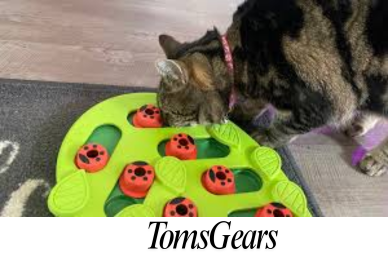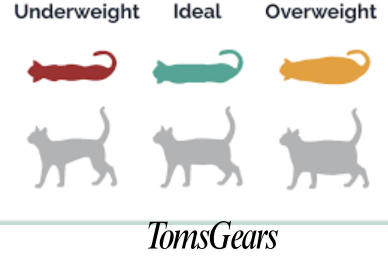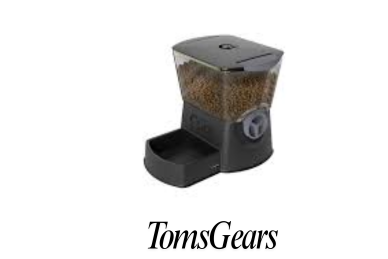Thick Cat Claws | Causes and Grooming Techniques
A cat’s claws are composed of a tough protein called keratin, the same material that makes up human fingernails and hair. The claw itself grows from a quick, which is the living tissue inside the end of each toe. As new keratin cells form, they become compacted into the hard, curved outer sheath we recognize as the claw.
But what if it grows abnormally thick? Below, we’ll explain what causes thick cat claws, how to identify if it’s natural for your cat or should you be concerned, and most importantly, how to handle it. Let’s start.
Why Some Cats Naturally Have Thick Claws
Thick, sturdy claws serve several important purposes for cats:
- Hunting and catching prey: The hooked shape and sharp points allow cats to grasp and tear into their prey effectively.
- Climbing and scratching: Claws provide traction for climbing trees, posts, and scratching surfaces to remove old outer layers.
- Balance and grip: When extended, claws help cats maintain balance and get a grip, especially when jumping or running.
- Self-defense: In threatening situations, cats can use their claws to defend themselves against potential threats.
Normal vs. Abnormal Thickness for Cat Claws
Some claw thickness variation is normal among cats. Outdoor cats who use their claws frequently may have thicker, more robust claws than strictly indoor cats. However, excessively thick or overgrown claws can be an indication of an underlying issue.
Identifying Overgrown Claws
Pay attention to the curl of your cat’s claws. If they appear to curve in a tight circle or the tips are dramatically thick and elongated, they may be overgrown. Overgrown nails can grow into the paw pads, causing pain and potential infection.
Risks of Overgrown Claws
Excessively long claws can catch on surfaces, tear, or break which is painful for your cat. Overgrown claws also increase the risk of injury from scratches to you, your family, or your home furnishings.
Other Cat Claws Fun Facts
- Cats have 18 claws – 5 on each front paw, and 4 on each back paw.
- A cat’s front claws are larger than the rear claws.
- Claws are made up of layers like an onion, with a new layer developing about every 3 months.
- Cat claws are extremely hard, rating a 3 out of 4 on the Mohs Hardness Scale.
What Causes Thick Cat Claws?
Breed Tendencies
While all cats can develop thick claws under certain conditions, some breeds may be more prone due to genetics:
- Bengals: This active breed descends from the Asian Leopard Cat and may inherit thicker claws.
- Maine Coons: One of the largest domestic cats, their substantial size extends to stouter claws.
- Pixie-Bobs: This breed was developed from bobcats and domestic stock, possibly inheriting robust claws.
Age and Scratching Opportunity
As cats age, their claws can become thicker and more prone to overgrowth if they don’t have adequate scratching surfaces. Senior cats may also be less able to keep their nails naturally worn down through scratching behaviors.
Lack of acceptable scratching areas and posts can also lead to overgrowth in cats of any age. Providing appropriate scratchers is important for managing claw conditions.
Potential Underlying Health Conditions
While not always the cause, excessively thick or overgrown nails in cats can sometimes indicate an underlying health issue:
- Nutritional Deficiencies: Lack of certain vitamins and minerals may impact claw condition.
- Metabolic Disorders: Conditions like diabetes or thyroid disorders can sometimes manifest as thickened nails.
- Infections: Fungal or bacterial nail infections can cause thickening and deformity.
- Symptoms: Additional signs like lethargy, weight changes, or poor grooming habits may indicate a medical problem.
If you notice a sudden or significant change in your cat’s claw condition alongside other symptoms, it’s advisable to have your vet examine your cat.
How to Groom and Manage Thick Claws?
Step 1: Get Your Cat Comfortable
Apply any calming pheromones or have the second person provide gentle restraint. Remain calm and patient – this process may take time if your cat is wiggly.
Step 2: Extend the Nails
Gently massage the paw pads or lightly squeeze the toe to extend each nail. This makes it easier to identify the quick (pink part) you want to avoid cutting.
Step 3: Trim Carefully
Place the trimmer on the nail horizontally across the tip, avoiding the quick. Snip off just the sharply hooked end in one quick motion. Less is more – don’t aim to trim the entire nail.
Step 4: Check the Quick
If you do accidentally cut into the quick and bleeding occurs, don’t panic. Apply styptic powder or clotting agent and provide your cat with a treat for being patient.
Step 5: Avoid Cutting the Dewclaws
Cats have two dewclaws (thumb nails) on their front paws that are less obvious. It’s best not to trim these unless necessary.
Step 6: End With a Reward
Give your cat their favorite treat or play session after each trimming to create a positive association. Stay calm throughout.
Step 1: Get Your Cat Comfortable
Apply any calming pheromones or have the second person provide gentle restraint. Remain calm and patient – this process may take time if your cat is wiggly.
Step 2: Extend the Nails
Gently massage the paw pads or lightly squeeze the toe to extend each nail. This makes it easier to identify the quick (pink part) you want to avoid cutting.
Step 3: Trim Carefully
Place the trimmer on the nail horizontally across the tip, avoiding the quick. Snip off just the sharply hooked end in one quick motion. Less is more – don’t aim to trim the entire nail.
Step 4: Check the Quick
If you do accidentally cut into the quick and bleeding occurs, don’t panic. Apply styptic powder or clotting agent and provide your cat with a treat for being patient.
Step 5: Avoid Cutting the Dewclaws
Cats have two dewclaws (thumb nails) on their front paws that are less obvious. It’s best not to trim these unless necessary.
Step 6: End With a Reward
Give your cat their favorite treat or play session after each trimming to create a positive association. Stay calm throughout.
Tips for Grooming Thick Nails
- Take just the hooked tip off thick nails to avoid cutting into the insensitive outer hull
- Consider trimming one paw per session for severely overgrown nails
- Thick nails may dull trimmers quickly, so replace as needed
- For extremely overgrown or deformed nails, seek professional groomer assistance
Providing Scratchers
Cats need to scratch – it’s an instinctive behavior for claw maintenance and marking. To discourage destructive scratching:
- Scratcher Types: Provide a variety of scratching posts/pads made from materials your cat prefers like sisal, wood, or cardboard.
- Size and Positioning: Opt for sturdy, larger posts that are tall enough for full stretches. Place them near cat hangouts.
- Training: Use positive reinforcement to encourage the use of approved scratchers. Deter undesired scratching gently and consistently.
Nail Caps/Covers
An alternative to trimming, temporary nail caps provide a safe plastic coating over the outer claw:
- Cap Types: Choose between standard nail caps that require adhesive application or cap/collar combo products.
- Application: This is best done by a professional groomer or vet for accurate sizing and safe application.
- Pros/Cons: Caps safely blunt claws but need frequent replacement. Discuss with your vet if right for your cat.
When to Consult a Vet
While some changes in claw thickness may be normal, you should have your cat examined if you notice:
- Sudden, significant thickening of the claws
- Claws that appear deformed or abnormally colored
- Claws that bleed easily or cause your cat pain
- General lethargy, appetite changes, or other potential health issues
Your veterinarian can determine if your cat’s thick nails are simply an incidental finding or could indicate an underlying condition requiring medical treatment.
Other Cat Claw FAQs
Are thick claws just a sign of my cat getting older?
Not necessarily. While senior cats can develop thicker nails from lack of natural wear, significant thickening can also indicate a potential health issue. Have your vet examine any sudden, abnormal claw changes.
Can I use regular human nail clippers on my cat?
It’s not recommended. Human nail trimmers are typically too large and dull for safely and accurately trimming a cat’s nails, especially if they are overgrown or thick. Invest in proper, sharp cat nail trimmers.
Is it okay if I can’t seem to trim my cat’s thick nails fully?
If you’re struggling to trim overgrown or thickened nails at home, it’s better to stop and seek professional grooming help. Improper trimming risks cutting into the quick, which is very painful for your cat.
How can I tell if my cat’s claws are too thick?
Observe the claw shape – if they appear to curve in an abnormally tight circle or the tips are dramatically elongated and thick, that could indicate overgrowth or thickening requiring attention.
Is there anything I can give my cat to help with thick claws?
Do not give medication or supplements without first consulting your veterinarian. Some claw thickening can relate to dietary deficiencies, so your vet may recommend an approved dietary change or supplement if warranted after an examination.
I hope this comprehensive guide has provided you with a thorough understanding of thick cat claws, covering causes, management techniques, health implications, research, and more. Let me know if you have any other questions, in the comment section below.






